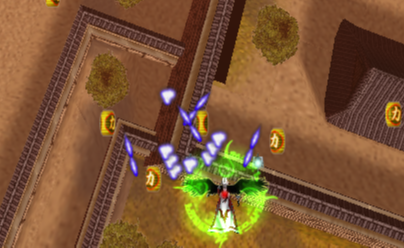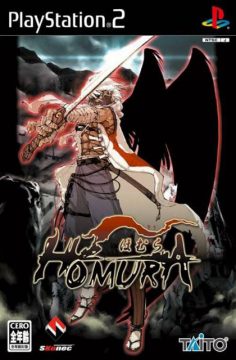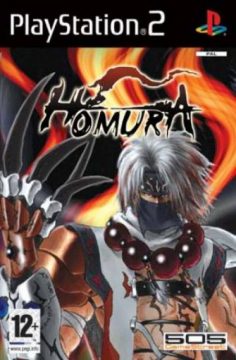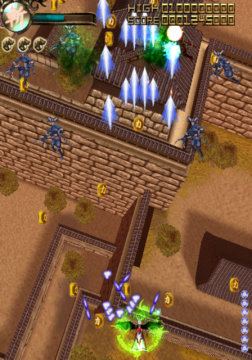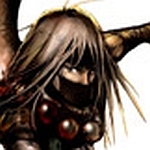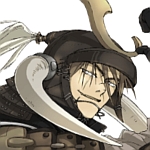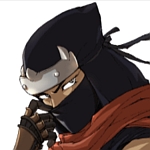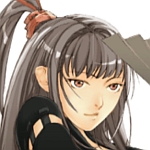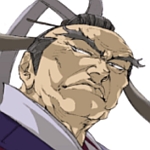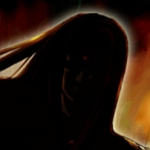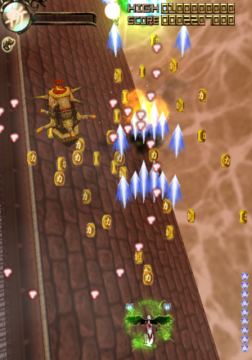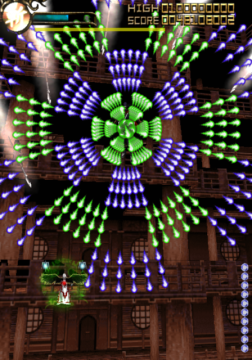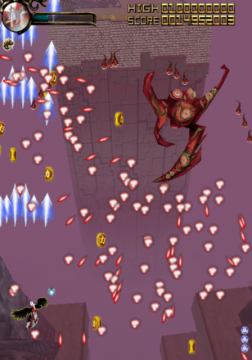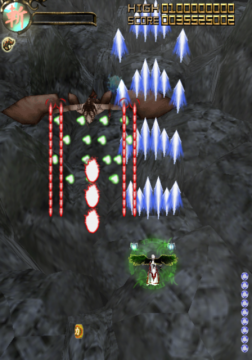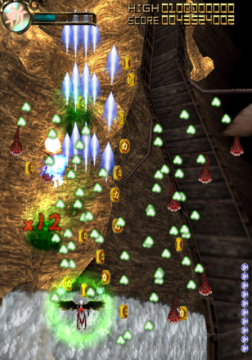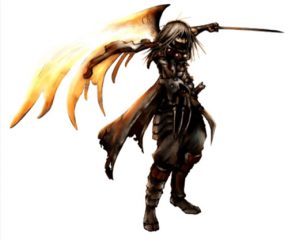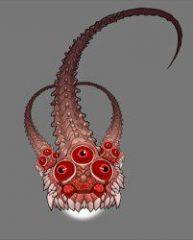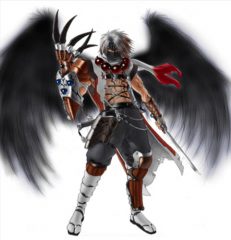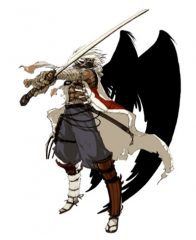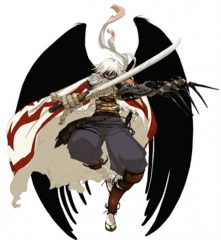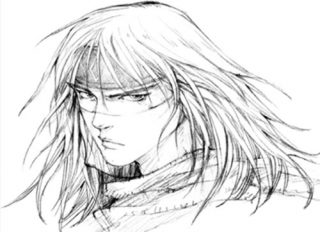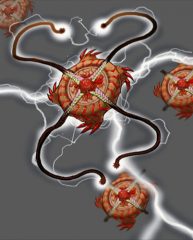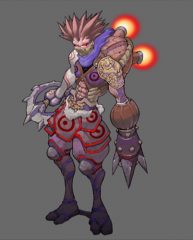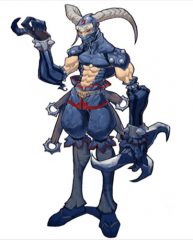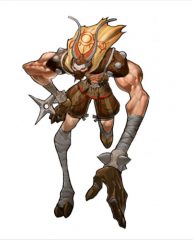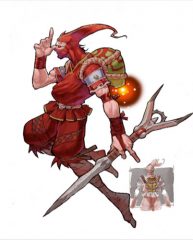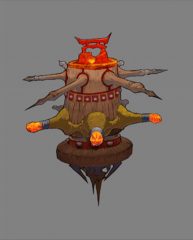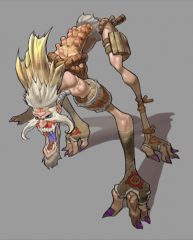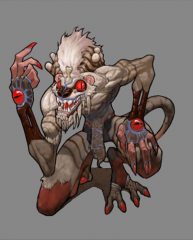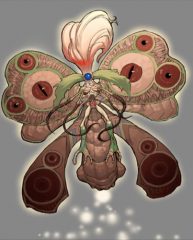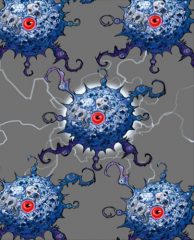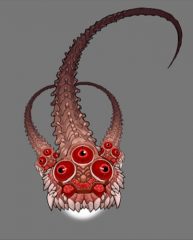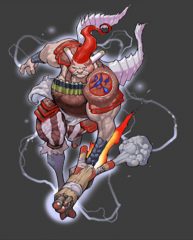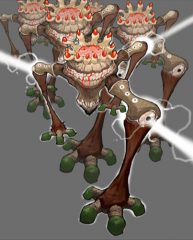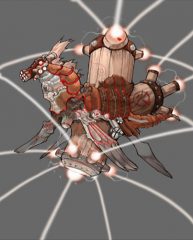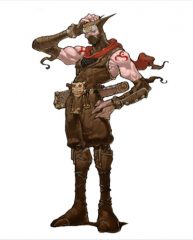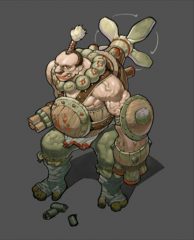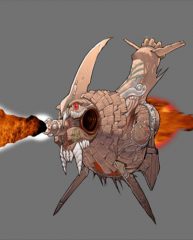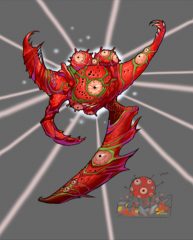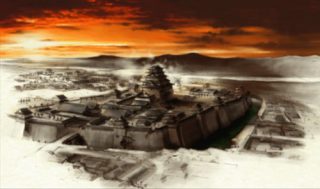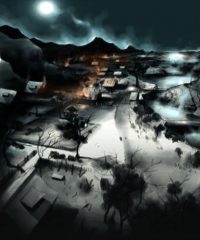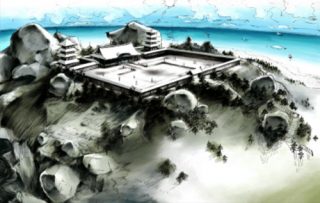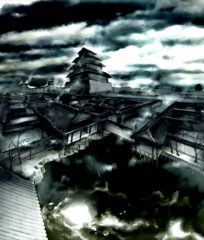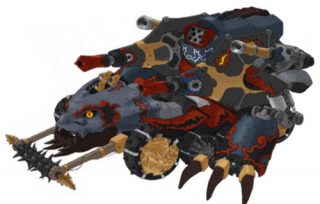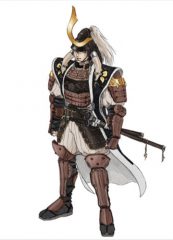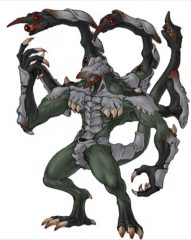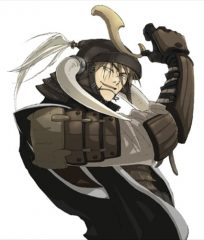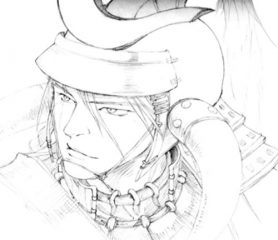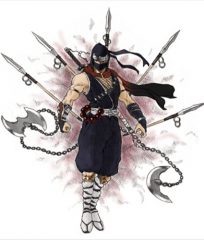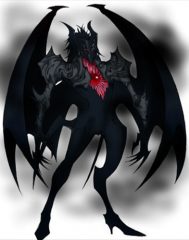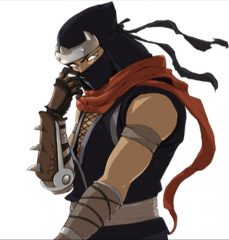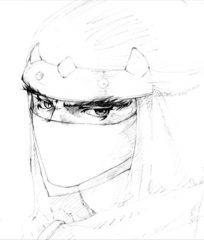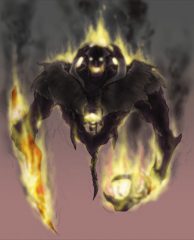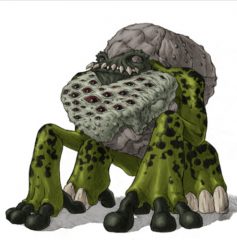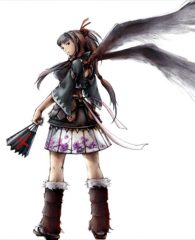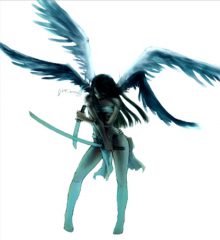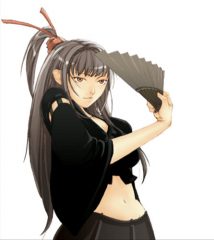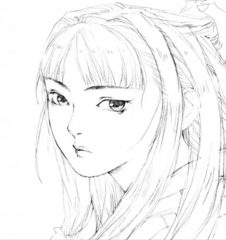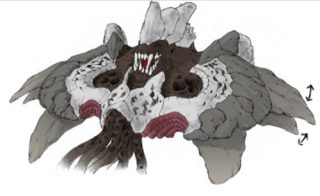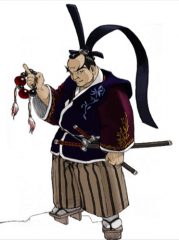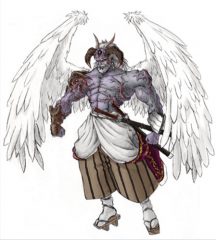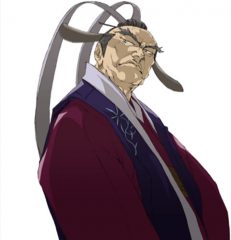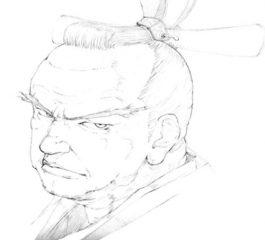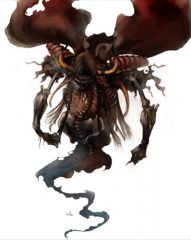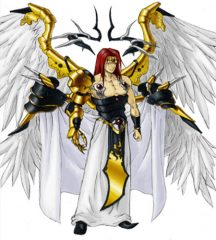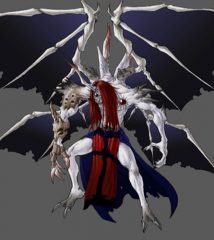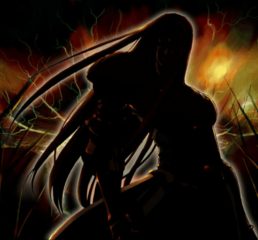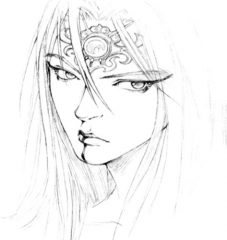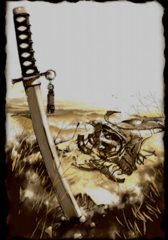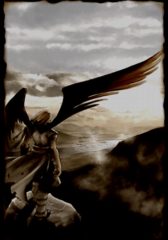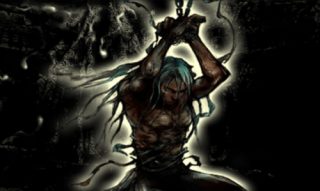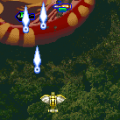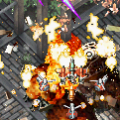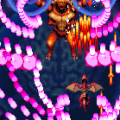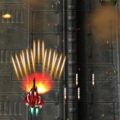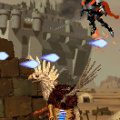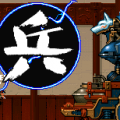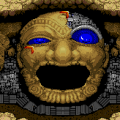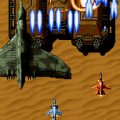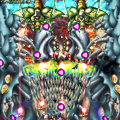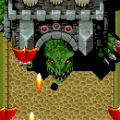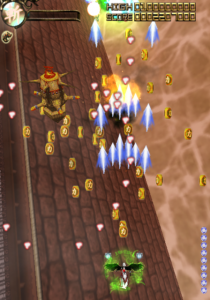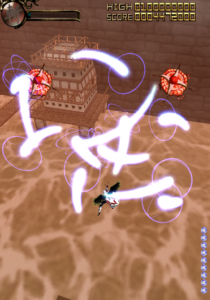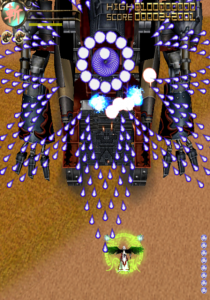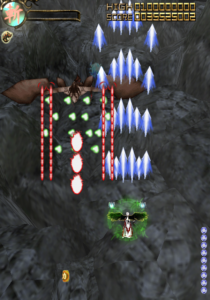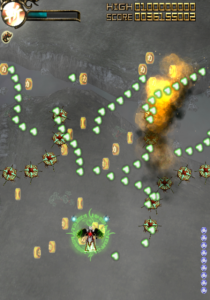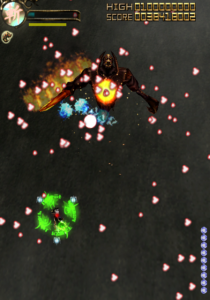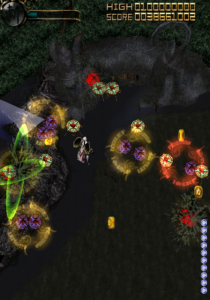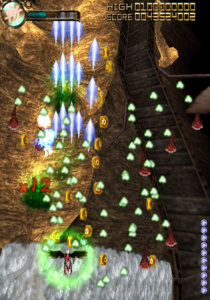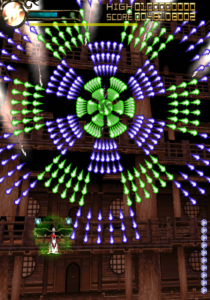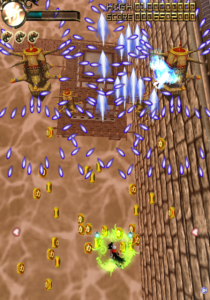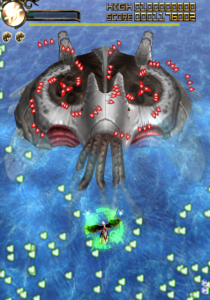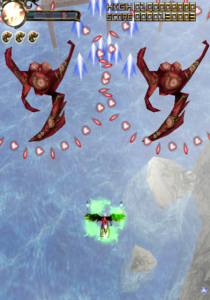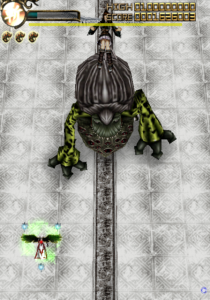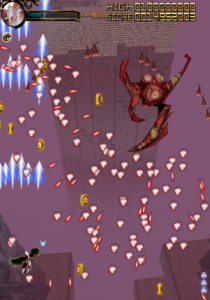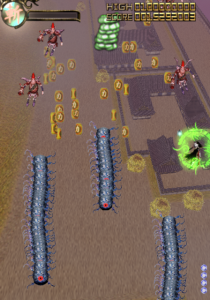Many tropes of the shoot-em-up genre are thoroughly established and easy to identify, so it is not common to see a Japanese-themed bullet hell shoot-em-up created by Koreans, let alone having the chance to play a good one. This is where Homura steps in and gets the privilege of representing such an uncommon diaspora of gaming. Developed by Skonec, known for their contributions in the genre with Psyvariar 2, the game seems to mesh elements that feel right at home for many players while still managing to have its own identity in many respects. It was released in 2005 for the arcade, later followed by a PlayStation 2 port.
Frankly, the story has never been of importance in such a frantic genre where your only objective is to shoot everything in sight and survive as long as possible. It does though, more often than not, offer imaginative art styles and designs with settings that can be quite memorable. Homura (which roughly translates to “flame” or “blaze”) sits right in the middle of it all. Set in a fictional timeline during the Japanese Edo period, the story revolves around a forbidden Heaven’s jewel which came to Ieyasu Tokugawa’s possession, granting him many powers, resulting in the invasion of Osaka Castle, and opening his path for ruling the kingdoms. Of course, no one is going to let him have it his way, so members of different families unite to oppose him. Their only hope is Homura, the powerful half-human being, who is not affected by the jewel due to his bloodline, and is the only one capable of defeating the demonic army of Tokugawa.
Characters
Homura
Homura’s powers and wings suggest that he’s in fact a “Tengu”, a legendary demigod creature in Japanese folklore that is known for having bird-like characteristics. Particularly in Buddhism, tengus were considered dangerous, but gradually their reputation changed and turned into that of a protective spirit of the mountains. These folkloric elements, paired with the details from the game, suggest that Homura can be labeled as an anti-hero. He resembles a fallen angel with demonic attire, and particularly notable are the black wings and claws on his right hand. Homura was initially imprisoned before being requested by the group, and many members didn’t even want him in the first place. He wasn’t that eager to cooperate either, but his mother was one of the victims by the hand of Tokugawa, so Homura’s true motivation for accepting the mission is revenge.
Hideaki Kobayakawa
Based on the real-life Kobayakawa, he is one of Tokugawa’s men and the first boss of the game. During battle, he uses a gigantic demon tank to attack you, and upon destroying it, he morphs into a demon himself.
Hanzo Hattori
A famous real-life samurai and ninja master of the Sengoku era, he is credited for saving the life of Tokugawa and helping him become the ruler of united Japan. In the game, Hanzo is the second boss and he attacks you with his ninja expertise, while his second form is that of a black devil with gargoyle wings.
Yuki Tsubasa
The third boss and only female character in the game. She resembles a tengu, just like Homura. Yuki first summons a big toad-like creature, and after that she transforms into a semi-nude, blue-skinned, double-wielding katana angel. Smooth move, Skonec.
Ieyasu Tokugawa
With a face like that, it’s difficult not being the bad guy. Either way, in real-life history he is the founder and first shogun of the Tokugawa shogunate in Japan. In the game, Tokugawa’s second form resembles yet another tengu with angelic and demonic traits mixed together. He has a certain affinity for Nobunaga’s final transformation in Onimusha 3. Tokugawa is truly merciless and uses very difficult bullet patterns to overcome; it’s easy to be tricked into thinking he’s the last boss.
(Nameless)
Now this guy is the real deal, also the hard-ass final boss of the game. Apparently, he is the Tengu who stole the forbidden jewel and gave it to Tokugawa for conquering the kingdoms, so after that he could rule both Heaven and Earth. Much like the rest, he has an awesome demonic transformation.
The setting is promising, particularly these renditions similar in style to the Sengoku Basara series, but there is absolutely no story development, not even cutscenes or dialogue. It feels like lost potential, particularly with all the cool art style, clearly one of the game’s most memorable aspects. Essentially, Homura is a mix between traditional Japanese elements and steampunk. The enemies are particularly eccentric, ranging from flying demonic ninjas shooting their guns, to battalions of piranha-like ships. Everything feels organic and original, combining fauna and flora of all kinds with technology and Japanese folklore. Overall it’s a breath of fresh air for the genre’s stale tropes and it’s unfortunate that the concept art is what truly does justice to the game’s look and style, since the graphics are slightly sub-par. Most backgrounds are bland, something that can be justified since the focus is on-going aerial combat, but one can’t help but feel that much more could have been done with the scenery and presentation. This fact is emphasized even more by some genuinely amazing scenes and transitions during the 2nd and 4th stages.
While the setting and characters are not really important when it comes down to the actual gameplay, all of this does however affect what Homura can do in the game itself. Gameplay wise, Homura should be considered a magical samurai. He flies around with high speed, evading millions of projectiles, fires powerful waves of energy bullets and uses his sword for annihilating entire armies. In pure arcade style, there are only two buttons necessary to play the game: Shoot and Draw Sword. The former consists in rapid-fire projectiles that spread through the screen, with two parallel blue orbs (options) shooting slightly more diagonally, as a result covering more area than Homura’s body.
The sword is the game’s real highlight and core mechanic. The sword can be used in two major ways; not only you can deflect enemy bullets and defend yourself, but you can also execute an awesome “Battou” mad dash attack that instantly kills all enemies and their shots currently on the screen. You have to push the sword button only when you are close enough to an enemy, and when the hit connects, it binds all existing ones on screen, allowing Homura to follow with a quick chain of slashes. If you are not close enough, Homura simply performs the normal sword counter, which can still be just as much devastating – the higher the number of projectiles deflected, the more damage inflicted. Furthermore, pressing both Shoot & Sword buttons at the same time results in a Bomb attack that once again destroys all enemies and bullets in typical shoot-em-up fashion. Each time the animation for performing a Sword or Bomb maneuver ends, Homura gains approximately one second of invincibility frames, something necessary for surviving the “bullet hell” and planning your attacks.
While this might trick you into thinking the game overpowers you, the mechanics are tweaked to work seamlessly. The sword can be used only when it is charged and, upon using it once, you have to wait a few seconds to be able to do so again. The game also makes sure to notify you about this in two ways – On the top left corner of the HUD, there is an orb that fills gradually and not only it makes a “shin” sound effect when it is full, but it also starts glowing and Homura himself gets immediately surrounded by a green circular aura. This mechanic of waiting gives to the game its edge, a little bit of strategy, and draws the line between victory or defeat. Either you use the sword to escape from and deflect enemy fire (killing some of the lesser ones in the process) or you risk by getting closer to execute the special Battou attack. Some of the best moments in the game happen when you approach to strike while the meter is still charging, calibrating exactly the instant when you can unleash a screen-clearing attack… or simply fail miserably. The more you play, the more you get accustomed to the exact timing the sword is ready to be used (approximately 5 seconds) so it becomes more like an instinct after you spend some time with the game.
While the Bombs have the same result as the Battou attack, they are very limited. On standard game settings, you start with only two of them, and there is absolutely no other way of increasing that number besides dying. One bomb is added each time you get killed and since the Battou attack can’t be used against bosses and mini-bosses, it’s best to stock bombs for using only when you really need to. If you run out of lives and use a credit to continue, the number of bombs you have resets to the default value. Of course, the Bomb attack doesn’t buy you time for charging the sword meter, so it can leave you widely exposed to enemy fire during some tricky situations. One annoying thing about their usage lies with the controls themselves. The Bomb is executed by pressing both buttons at the same time, so if you are in a tight situation when you keep shooting and moving and want to use one, you could accidentally perform a Sword attack that might go to waste. Still it’s nothing major if you know what you are doing.
The Shoot button is the one that you probably will be keeping pressed most of the time. There are a few enemies that release projectiles when you kill them, but otherwise it is safe to fire as much as you can. As previously mentioned, Homura has on default two orbs at his sides that expand the firepower, and this options can be increased (à la Gradius style) up to a total of four, adding considerably to the damage the player can cause. To do so you must fill the horizontal bar of the HUD by collecting the “Chikara” (“power”) coins that scatter on the screen each time you kill an enemy (also very reminiscent of the Shikigami no Shiro games). The more Chikara you get, the better, since they also serve in increasing the overall score.
Speaking of which, the scoring system does complement the elements of the game and is very rewarding when you continuously perform well. The real catch for scoring high revolves primarily around the Battou move. The scoring multiplier changes according to the number of enemies you slay during a Battou attack, depending on how many you chain each consecutive time. For example, you kill six enemies with a Battou, everything else you kill with normal shots multiplies by x6, and you kill another six again with a Battou, you add half of that to the total multiplier of x9. In order to continue raising this combo value, you have to be selective when to unleash the attack, since after a few seconds the multiplier decreases. This encourages the player to wait for a higher number of enemies to gather on screen, raising the stakes. Deflecting bullets is another crazy way of gaining points, particularly during bosses.
Furthermore, a successful Battou attack turns Homura into a magnet for all the Chikara that those slain enemies release, not only adding to the score but also speeding up the process for adding another shooting orb. Although the scoring system feels random at first, it is pretty simple since it’s interconnected with your performance, and all mechanics and scoring elements in fact add up to a gameplay that feels exciting, rewarding and ultimately satisfying. If played right, Homura makes you feel badass like its titular supernatural protagonist. To its credit, that is a character connection you don’t usually experience in a shmup since mostly the genre is about controlling hi-tech vehicles.
The difficulty is exactly what you would expect – challenging, with a learning curve. It is a bullet hell shmup after all, and the game doesn’t pull any punches either. It is moderately paced, almost slow at times, but the game demands full concentration on what’s going on screen, and enemy moves and bullet patterns need to be memorized in order to proceed. With practice, any hostility can be dodged and evaded, since Homura’s hitbox is actually visible and represented by a small glowing red dot on his back, but the last segments of the game can be absolutely overwhelming at times, regardless of your improvement.
Enemy fire is abundant and by the dozens, sometimes by the hundreds, but generally doesn’t fly at fast speeds so it all has a nice pace that allows you to plan ahead. During the 4th stage there are minor visibility problems, mostly due to all the chaos, but otherwise all bullets are colorful and distinguishable from the background, creating also a jarring contrast with the art style of the game (some ripped straight from Psyvariar 2). Some of the bullet patterns are actually fantastic and quite original, doing justice to the term “bullet hell”. Explosions look great, indicating properly the damage you have caused, and the sound effects do a perfect job in telling you what’s going on during the chaotic shootouts, although Homura’s voice when he gets killed can be sometimes amusing as he sounds annoyed more than anything else for being defeated.
Even the music deserves praise since it doesn’t get in the way of the player, taking a more laid-back approach with epic undertones, fitting perfectly with the pace of the game. The soundtrack features prominent mixes of orchestral layers with traditional Japanese motifs and instruments, with later themes upping the ante with electronic percussion (Stage 3) and electric guitars (Stage 4). One aspect of the game that I found baffling though is that if you survive long enough during a boss battle, any mid to major boss explodes on its own like it died of boredom or something. Clearly the developers wanted to pull off an Ikaruga here, and while this gives you the opportunity to become good enough to finish a level by only evading and/or deflecting with your sword, it feels like this feature could have been implemented better.
Needles to say, Homura doesn’t offer much besides its playing style and it lacks on level design. There is not much exemplified variation during stages. Except for the 4th stage, you can choose between two paths labeled as “Easy” or “Hard”. During the 3rd stage, the path divides automatically based on your actions, by either killing the mid-boss or simply waiting/surviving the battle, whereas during the 1st and 2nd stage you simply move left or right to select the path. There is a also a hidden 5th stage that you can access in typical 1CC fashion by not using any continues up to that point. All these elements do increase the longevity and replay value, but there is hardly any real difference between paths, aside from the number of enemies and a few patterns, it mostly serves as a variation for scoring. Even the hidden final stage consists only of one boss that takes two different forms. Ultimately, it feels like something substantial could have been done with these parts of the game to complement and put to better use the mechanics.
Fans of the genre might identify Homura as an aesthetic fusion of Sengoku Ace / Blade and Shikigami no Shiro, and that alone can be more than enough for some. Still, as far as vertical shoot-em-ups go, Homura is fun to play and keeps you coming back for more. It feels slow, tedious and weird during the first playthrough, but it’s incredible how much depth is revealed later on and how rewarding the scoring system can become. Lost potential aside, its shortcomings help somehow emphasize how solid the core game is.
Initially developed for the Taito Type-X arcade system, Homura got a second shot on the PlayStation 2. For the most part, it is a Japanese exclusive game, a fact that contributes to its relative obscurity. The PS2 version was published by Taito in 2005, followed a year later by a re-release labeled “Taito Best”. The version to grace non-Japanese players was released only for PAL territories and it was published in 2006 by 505 Game Street. Slight differences between versions can be attributed to technical aspects related to hardware, such as resolution, image sharpness or blurring, but essentially the Arcade and PS2 versions are identical and both run very smoothly.
The only real extra of the console port is the addition of a Gallery Mode, which can be tedious to unlock. You need to clear at least the first stage and either die or quit after that to add one more entry to the gallery. This process is in conjunction with the credits system, so going past the first stage it adds one more credit to your disposal, and each credit earned corresponds to a gallery entry. With a total of 55 credits, you can unlock the full gallery. Other than this bonus, the PS2 version has no stage selection or means of practice, so it can be considered pretty bare-bones. The PAL release allows you to select between NTSC 60hz or PAL 50hz display, and the latter seems to slow things down a notch. Other than that, the PAL version has english menus and text, including a baffling translation of the intro, but it’s strangely missing the brief tutorial. Moving forward to 2012, the arcade version of Homura was added to Taito’s NESiCAxLive system, marking the last release date related to the game.
Links:
Homura Official Website
